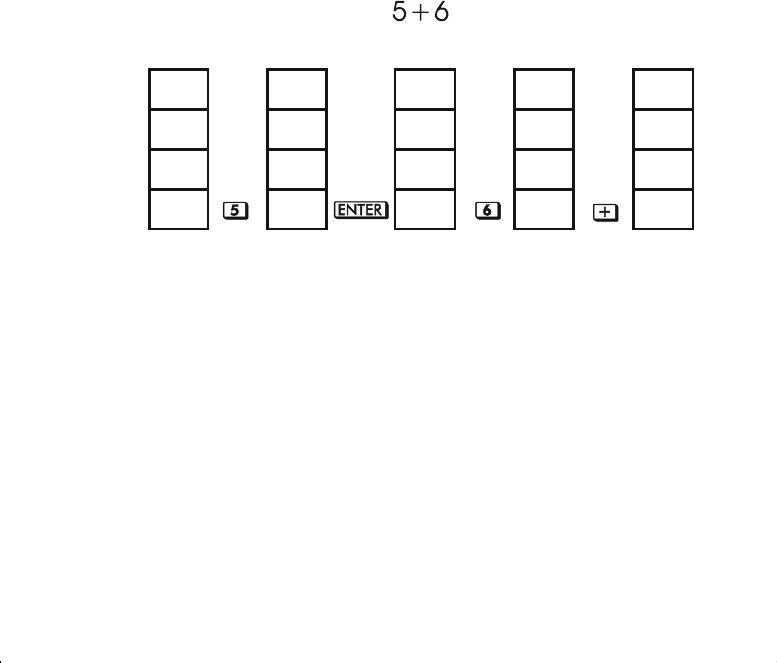
RPN: The Automatic Memory Stack
2–5
File name 33s-English-Manual-040130-Publication(Edition 2).doc Page : 388
Printed Date : 2004/1/30 Size : 13.7 x 21.2 cm
3. The stack drops.
Notice that when the stack lifts, it replaces the contents of the T– (top) register
with the contents of the Z–register, and that the former contents of the
T–register are lost. You can see, therefore, that the stack's memory is limited
to four numbers.
Because of the automatic movements of the stack, you do not need to clear
the X–register before doing a new calculation.
Most functions prepare the stack to lift its contents when the next number
enters the X–register. See appendix B for lists of functions that disable stack
lift.
How ENTER Works
You know that
Ï
separates two numbers keyed in one after the other. In
terms of the stack, how does it do this
?
Suppose the stack is again filled with 1, 2,
3, and 4. Now enter and add two new numbers:
1 lost
2 lost
T
1
2
3
3
3
Z
2
3 4 4 3
Y
3
4 5 5 4
X
4
5 5 6 11
1
2 3 4
1. Lifts the stack.
2. Lifts the stack and replicates the X–register.
3. Does not lift the stack.
4. Drops the stack and replicates the T–register.
Ï
replicates the contents of the X–register into the Y–register. The next
number you key in (or recall) writes over the copy of the first number left in the
X–register. The effect is simply to separate two sequentially entered numbers.
Y ou can use the replicating effect of
Ï
to clear the stack quickly: press 0
Ï
Ï
Ï
. All stack registers now contain zero. Note, however,
that you don't need to clear the stack before doing calculations.


















